1. Holland TL, Fowler VG Jr. Epidemiology of
Staphylococcus aureus bacteremia in adults. Updated 2019. Accessed November 24, 2019.
https://www.uptodate.com.
2. Lakhundi S, Zhang K. Methicillin-resistant
Staphylococcus aureus: molecular characterization, evolution, and epidemiology. Clin Microbiol Rev. 2018; 31(4):e00020–18. PMID:
30209034.

3. Kirby WM. Extraction of a highly potent penicillin inactivator from penicillin resistant staphylococci. Science. 1944; 99(2579):452–453. PMID:
17798398.

4. Lowy FD.
Staphylococcus aureus infections. N Engl J Med. 1998; 339(8):520–532. PMID:
9709046.
5. Seybold U, Kourbatova EV, Johnson JG, Halvosa SJ, Wang YF, King MD, et al. Emergence of community-associated methicillin-resistant
Staphylococcus aureus USA300 genotype as a major cause of health care-associated blood stream infections. Clin Infect Dis. 2006; 42(5):647–656. PMID:
16447110.
6. Kim ES, Song JS, Lee HJ, Choe PG, Park KH, Cho JH, et al. A survey of community-associated methicillin-resistant
Staphylococcus aureus in Korea. J Antimicrob Chemother. 2007; 60(5):1108–1114. PMID:
17884831.
7. Park KH, Chong YP, Kim SH, Lee SO, Choi SH, Lee MS, et al. Community-associated MRSA strain ST72-SCC
mecIV causing bloodstream infections: clinical outcomes and bacterial virulence factors. J Antimicrob Chemother. 2015; 70(4):1185–1192. PMID:
25433004.
8. Park SY, Chung DR, Yoo JR, Baek JY, Kim SH, Ha YE, et al. Sequence type 72 community-associated meticillin-resistant Staphylococcus aureus emerged as a predominant clone of nasal colonization in newly admitted patients. J Hosp Infect. 2016; 93(4):386–389. PMID:
26874934.

9. Joo EJ, Chung DR, Kim SH, Baek JY, Lee NY, Cho SY, et al. Emergence of community-genotype methicillin-resistant
Staphylococcus aureus in Korean hospitals: clinical characteristics of nosocomial infections by community-genotype strain. Infect Chemother. 2017; 49(2):109–116. PMID:
28608660.
10. Friedman ND, Kaye KS, Stout JE, McGarry SA, Trivette SL, Briggs JP, et al. Health care--associated bloodstream infections in adults: a reason to change the accepted definition of community-acquired infections. Ann Intern Med. 2002; 137(10):791–797. PMID:
12435215.

11. Mermel LA, Allon M, Bouza E, Craven DE, Flynn P, O'Grady NP, et al. Clinical practice guidelines for the diagnosis and management of intravascular catheter-related infection: 2009 Update by the Infectious Diseases Society of America. Clin Infect Dis. 2009; 49(1):1–45. PMID:
19489710.

12. Charlson ME, Pompei P, Ales KL, MacKenzie CR. A new method of classifying prognostic comorbidity in longitudinal studies: development and validation. J Chronic Dis. 1987; 40(5):373–383. PMID:
3558716.

13. Paterson DL, Ko WC, Von Gottberg A, Mohapatra S, Casellas JM, Goossens H, et al. International prospective study of
Klebsiella pneumoniae bacteremia: implications of extended-spectrum beta-lactamase production in nosocomial Infections. Ann Intern Med. 2004; 140(1):26–32. PMID:
14706969.
14. CLSI. Performance Standards for Antimicrobial Susceptibility testing. CLSI Supplement M100-S25. 25th ed. Wayne, PA: Clinical and Laboratory Standards Institute;2015.
15. Enright MC, Day NP, Davies CE, Peacock SJ, Spratt BG. Multilocus sequence typing for characterization of methicillin-resistant and methicillin-susceptible clones of Staphylococcus aureus. J Clin Microbiol. 2000; 38(3):1008–1015. PMID:
10698988.
16. Shopsin B, Gomez M, Montgomery SO, Smith DH, Waddington M, Dodge DE, et al. Evaluation of protein A gene polymorphic region DNA sequencing for typing of
Staphylococcus aureus strains. J Clin Microbiol. 1999; 37(11):3556–3563. PMID:
10523551.
17. Oliveira DC, de Lencastre H. Multiplex PCR strategy for rapid identification of structural types and variants of the
mec element in methicillin-resistant
Staphylococcus aureus
. Antimicrob Agents Chemother. 2002; 46(7):2155–2161. PMID:
12069968.
18. Lina G, Piémont Y, Godail-Gamot F, Bes M, Peter MO, Gauduchon V, et al. Involvement of Panton-Valentine leukocidin-producing
Staphylococcus aureus in primary skin infections and pneumonia. Clin Infect Dis. 1999; 29(5):1128–1132. PMID:
10524952.
19. Song JH, Hsueh PR, Chung DR, Ko KS, Kang CI, Peck KR, et al. Spread of methicillin-resistant Staphylococcus aureus between the community and the hospitals in Asian countries: an ANSORP study. J Antimicrob Chemother. 2011; 66(5):1061–1069. PMID:
21393157.
20. Wyllie D, Paul J, Crook D. Waves of trouble: MRSA strain dynamics and assessment of the impact of infection control. J Antimicrob Chemother. 2011; 66(12):2685–2688. PMID:
21948966.

21. Joo EJ, Chung DR, Ha YE, Park SY, Kang SJ, Kim SH, et al. Community-associated Panton-Valentine leukocidin-negative meticillin-resistant Staphylococcus aureus clone (ST72-MRSA-IV) causing healthcare-associated pneumonia and surgical site infection in Korea. J Hosp Infect. 2012; 81(3):149–155. PMID:
22652522.

22. Joo EJ, Choi JY, Chung DR, Song JH, Ko KS. Characteristics of the community-genotype sequence type 72 methicillin-resistant
Staphylococcus aureus isolates that underlie their persistence in hospitals. J Microbiol. 2016; 54(6):445–450. PMID:
27225462.
23. Yang ES, Tan J, Eells S, Rieg G, Tagudar G, Miller LG. Body site colonization in patients with community-associated methicillin-resistant
Staphylococcus aureus and other types of
S. aureus skin infections. Clin Microbiol Infect. 2010; 16(5):425–431. PMID:
19689469.
24. Desai R, Pannaraj PS, Agopian J, Sugar CA, Liu GY, Miller LG. Survival and transmission of community-associated methicillin-resistant
Staphylococcus aureus from fomites. Am J Infect Control. 2011; 39(3):219–225. PMID:
21458684.
25. Uhlemann AC, Dordel J, Knox JR, Raven KE, Parkhill J, Holden MT, et al. Molecular tracing of the emergence, diversification, and transmission of S. aureus sequence type 8 in a New York community. Proc Natl Acad Sci U S A. 2014; 111(18):6738–6743. PMID:
24753569.

26. Copin R, Sause WE, Fulmer Y, Balasubramanian D, Dyzenhaus S, Ahmed JM, et al. Sequential evolution of virulence and resistance during clonal spread of community-acquired methicillin-resistant
Staphylococcus aureus
. Proc Natl Acad Sci U S A. 2019; 116(5):1745–1754. PMID:
30635416.
27. Souli M, Ruffin F, Choi SH, Park LP, Gao S, Lent NC, et al. Changing characteristics of
Staphylococcus aureus bacteremia: results from a 21-year, prospective longitudinal study. Clin Infect Dis. 2019; 69(11):1868–1877. PMID:
31001618.
28. Miko BA, Hafer CA, Lee CJ, Sullivan SB, Hackel MA, Johnson BM, et al. Molecular characterization of methicillin-susceptible
Staphylococcus aureus clinical isolates in the United States, 2004 to 2010. J Clin Microbiol. 2013; 51(3):874–879. PMID:
23284029.
29. Orscheln RC, Hunstad DA, Fritz SA, Loughman JA, Mitchell K, Storch EK, et al. Genetically restricted, methicillin-susceptible strains contribute to ongoing epidemic of community-acquired
Staphylococcus aureus infections. Clin Infect Dis. 2009; 49:536–542. PMID:
19589082.
30. Song KH, Kim ES, Park KH, Choi HJ, Kim KH, Lee S, et al. Clinical and molecular characterization of Panton-Valentine leukocidin-positive invasive
Staphylococcus aureus infections in Korea. Microb Drug Resist. 2019; 25(3):450–456. PMID:
30379606.
31. Jung J, Song EH, Park SY, Lee SR, Park SJ, Sung H, et al. Emergence of Panton-Valentine leucocidin-positive ST8-methicillin-resistant Staphylococcus aureus (USA300 clone) in Korea causing healthcare-associated and hospital-acquired bacteraemia. Eur J Clin Microbiol Infect Dis. 2016; 35(8):1323–1329. PMID:
27209287.

32. Bae E, Kim CK, Jang JH, Sung H, Choi YM, Kim MN. Impact of community-onset methicillin-resistant
Staphylococcus aureus on
S. aureus in a central Korea veterans health service hospital. Ann Lab Med. 2019; 39:158–166. PMID:
30430778.
33. Park CM, Lee DG, Choi SM, Park SH, Choi JH, Yoo JH, et al. A case of perianal abscess due to Panton-Valentine leukocidin positive community-associated methicillin-resistant Staphylococcus aureus: report in Korea and literature review from the Far East. Infect Chemother. 2008; 40(2):121–126.
34. Lim S, Chung DR, Baek JY, Kim SH, Peck KR, Lee NY, et al. A third case of USA300 community-associated methicillin-resistant
Staphylococcus aureus infection in Korea. Korean J Intern Med. 2013; 28(2):258–260. PMID:
23524494.
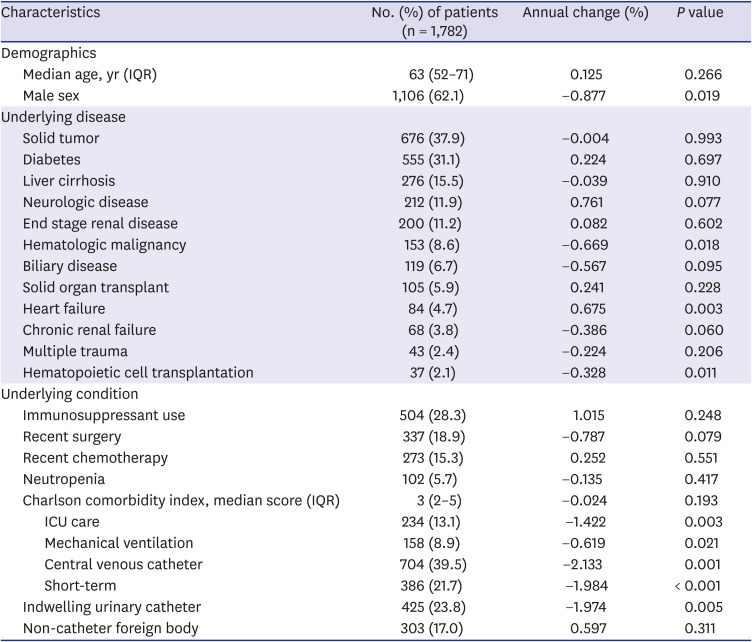
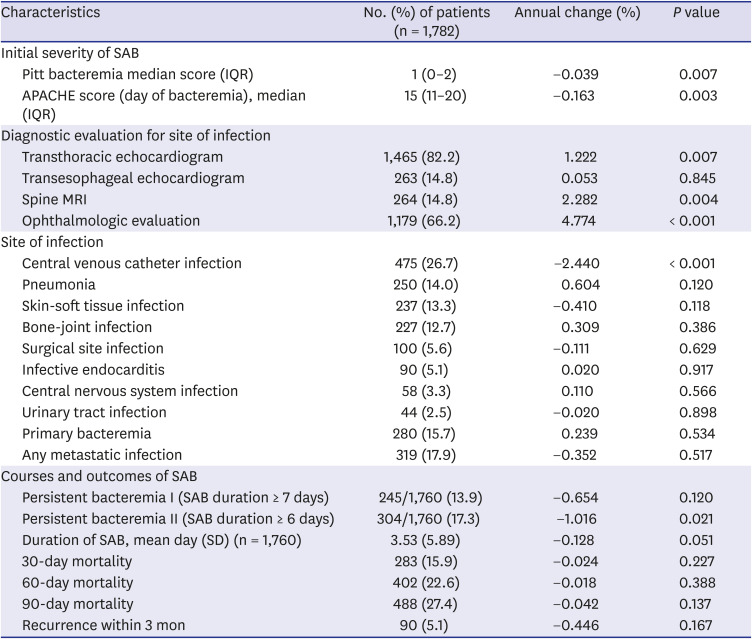
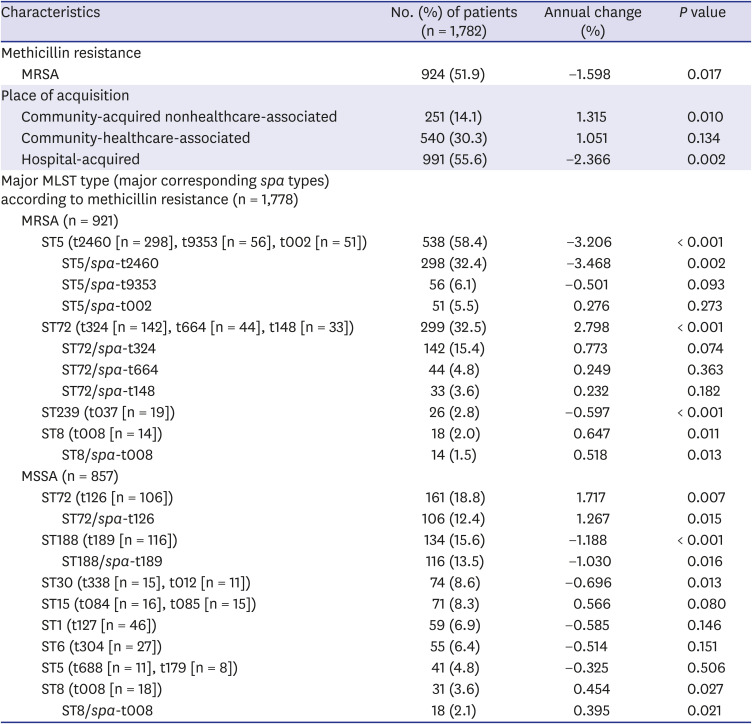




 PDF
PDF Citation
Citation Print
Print



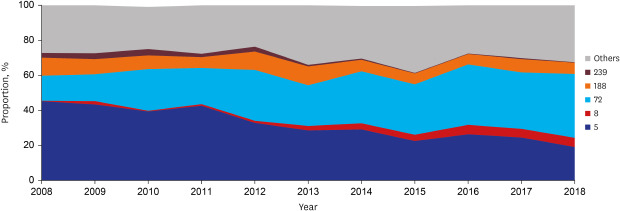
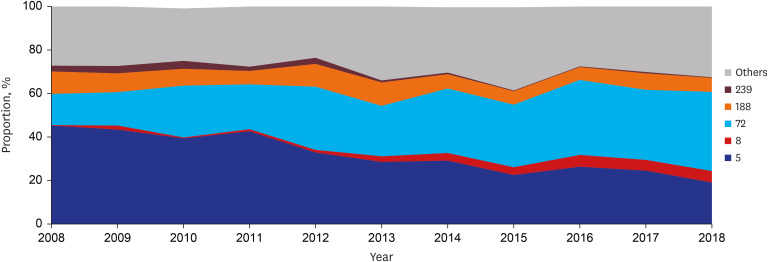
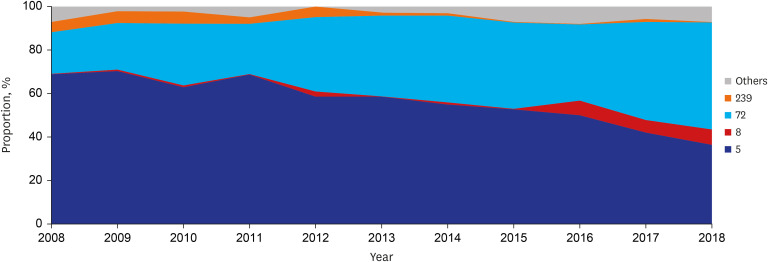
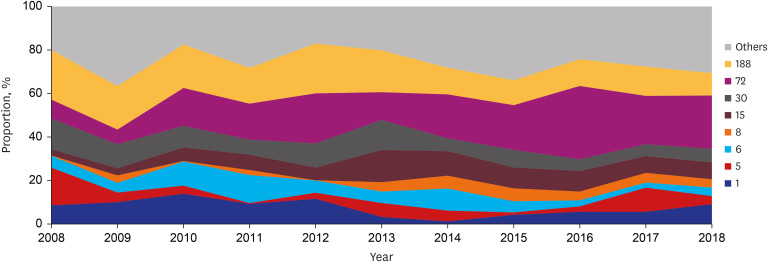
 XML Download
XML Download